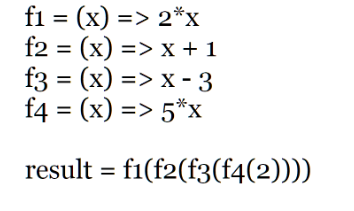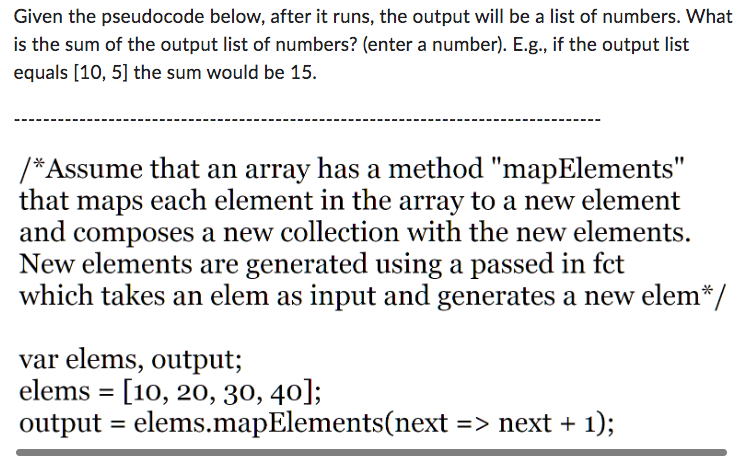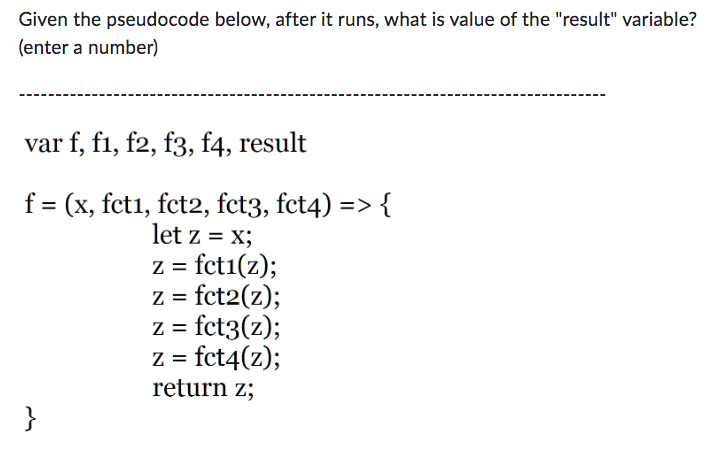Answered step by step
Verified Expert Solution
Question
1 Approved Answer
Please solve both parts part one: part two: f1=(x)=>2x f2=(x)=>x+1 f3=(x)=>x3 f4=(x)=>5x result =f1(f2(f3(f4(2)))) Given the pseudocode below, after it runs, the output will be
Please solve both parts
part one:

part two:

f1=(x)=>2x f2=(x)=>x+1 f3=(x)=>x3 f4=(x)=>5x result =f1(f2(f3(f4(2)))) Given the pseudocode below, after it runs, the output will be a list of numbers. What is the sum of the output list of numbers? (enter a number). E.g., if the output list equals [10,5] the sum would be 15 . /*Assume that an array has a method "mapElements" that maps each element in the array to a new element and composes a new collection with the new elements. New elements are generated using a passed in fct which takes an elem as input and generates a new elem*/ var elems, output; elems =[10,20,30,40] output = elems.mapElements(next => next +1 ); Given the pseudocode below, after it runs, what is value of the "result" variable? (enter a number) varf,f1,f2,f3,f4, result f=(x,fct1, fct 2, fct 3, fct 4){ let z=x; z=fct1(z) z=fct2(z) z=fct3(z) z=fct4(z) return z; 3
Step by Step Solution
There are 3 Steps involved in it
Step: 1

Get Instant Access to Expert-Tailored Solutions
See step-by-step solutions with expert insights and AI powered tools for academic success
Step: 2

Step: 3

Ace Your Homework with AI
Get the answers you need in no time with our AI-driven, step-by-step assistance
Get Started


